#durable rebar
Explore tagged Tumblr posts
Text
Basalt Fiber Market Growth: Leading Key Players Driving Innovation

Basalt fiber is derived from volcanic rock and stands out for its exceptional mechanical strength, heat resistance, and eco-friendliness. Unlike traditional steel, basalt fiber doesn’t corrode, making it an excellent choice for reinforcing concrete structures, especially in harsh environments where corrosion can be a concern.
One breakthrough application is basalt fiber-reinforced plastic (BFRP) rebars, which have revolutionized construction by offering a lightweight yet robust alternative to traditional steel reinforcement. These rebars are produced using advanced manufacturing methods like pultrusion and in-line winding, ensuring high strength and long-term durability.
Key Benefits of Basalt Fiber in Construction
Corrosion Resistance: BFRP rebars are immune to rust, significantly increasing the lifespan of infrastructure.
High Tensile Strength: Basalt composites boast tensile strength up to three times higher than conventional steel.
Cost Efficiency: Basalt fiber reduces labor and maintenance expenses while speeding up construction timelines.
Market Dynamics
The basalt fiber market is witnessing remarkable growth thanks to its unique properties and diverse applications across industries. As of 2023, the market was valued at approximately USD 279 million and is expected to reach USD 503 million by 2028, growing at a strong CAGR of 12.5%. This growth is largely driven by the increasing demand for non-corrosive materials in construction, which enhance durability, extend the lifespan of structures, and help reduce maintenance costs.
Several key players are driving the growth and innovation in the basalt fiber market:
Kamenny Vek (Russia): Known for producing high-grade continuous basalt fiber, Kamenny Vek caters to industries such as wind energy, marine construction, and high-pressure vessel manufacturing. Their products are valued for their mechanical strength and environmental sustainability.
Zhejiang GBF Basalt Fiber Co. (China): A top manufacturer in China, GBF produces a wide range of basalt fiber products, including bars, panels, and yarns. Their innovative basalt fiber-wrapped CNG cylinders for the automotive sector highlight their commitment to research and development.
JFE RockFiber Corp. (Japan): This company is making significant advancements in basalt fiber technology, contributing to applications across multiple industries.
As infrastructure projects increasingly focus on sustainability and durability, the demand for basalt fiber is set to rise. Its role in highway and bridge deck construction offers both reduced engineering costs and improved structural integrity. Ongoing R&D efforts are likely to expand its applications, paving the way for basalt fiber to become a cornerstone of modern construction.
To know more download PDF Brochure :
Basalt fiber is leading the charge in construction innovation. Its unique properties not only solve economic and environmental challenges but also present exciting opportunities for engineers and builders seeking more durable, sustainable solutions. As the industry continues to evolve, basalt fiber is well-positioned to play a critical role in shaping the future of sustainable construction.
#basalt Fiber#Sustainable Construction#Construction Materials#Infrastructure Innovation#BFRP Rebars#Corrosion-Resistant Materials#Building Durability#Civil Engineering Trends#Green Construction Solutions#Advanced Reinforcement Materials
0 notes
Link
Buy Tata Tiscon's super link stirrups bar online with unrivalled quality and interlocking technology. Tata Tiscon supplies customised stirrups for your dream home.
#tata tiscon superlink stirrups with superior durability#tmt bars#stirrups rebar#stirrups#tata tiscon buy online#stirrups in construction#stirrups in beam#tata tiscon distributor#stirrup reinforcement
0 notes
Text
In the mid-1970s, when Bjorn Borg was still ascendant and ABBA was just starting to churn out hits, Sweden gained notoriety for something entirely different: wantonly abusing the national-security exception enshrined in international trade law.
Sweden sought to protect its sneaker business, and to do so invoked the claim that a domestic footwear industry was crucial to the country’s national defense. It’s a relatively famous case, one of the first big tests of the World Trade Organization’s (WTO’s) tolerance for absurdity, and it used to be a funny footnote.
But with U.S. President Donald Trump, it became a template. In his first term, he used the WTO security exceptions to levy tariffs on steel and aluminum, and has done the same, only harder, in his second term. Last week, he invoked national security to slap tariffs on imports of cars and car parts. His administration is considering imposing more tariffs later this week on major trading partners such as Canada, Mexico, the European Union, and other parts of the world.
The reason this is problematic now—and for those scoring at home, Trump is using Section 232 of the 1962 Trade Expansion Act—is the same reason it was problematic then. If everything is national security—the administration’s list essentially includes everything from T-tops to rebar—then nothing is.
“The United States under Trump 2.0 is invoking economic security as a be-all and end-all. Everything that touches the U.S. economy becomes a matter of national security,” said Mona Paulsen, a trade expert at the London School of Economics.
In a forthcoming paper, Paulsen notes, citing a children’s game, “Today’s economic security may be the paper that covers rock.” Or as she told me: “No matter what you do, you can just claim a national security imperative, and get on with it, and you don’t have to talk to trading partners or to Congress.”
She stressed that the Trump administration’s creative approach to trade is not limited to Section 232 but involves the invocation of national emergencies more broadly.
To be sure, the nexus between national security and trade policy was not invented by Trump. After World War II, when U.S. officials sought to create a durable global order, trade was at the top of the agenda. It wasn’t entirely free trade, but conditioned. Friends and allies got preferential treatment, and foes got shortchanged. Witness the birth of the International Trade Organization, and the General Agreement on Tariffs and Trade, and the Marshall Plan, and the economic blockade on the nascent Soviet sphere.
The difference is that when in the past the United States explicitly linked trade to security, it did so to bolster its allies and to hobble its enemies.
Trump instead has targeted allies since taking office for a second time. His administration has threatened tariffs on Canada and Mexico, paused them, re-introduced them, paused them again, and will this week presumably put them back on. He has threatened Europe with trade reprisals. He has cowed Japan and South Korea, the two states that are crucial to any plans the Trump administration has to building a workable alliance against North Korea’s adventurism and China’s expansionism.
Also, to be fair, it’s not just the United States and it is not just Trump. Since the COVID pandemic, there has been an epidemic of protectionist measures around the world. Part of it is a response to COVID vulnerabilities, part of it is pure economic nationalism, and part of it is a reaction to American policies. Still, it all makes economists shake their heads.
As part of Trump’s outreach to Russia, he is contemplating sanctions relief for Moscow—even before Russian President Vladimir Putin has agreed to a long-term cease-fire. It gives truth to what Edward Fishman, a sanctions expert, called the “impossible trinity”: You can have a global economy, or economic security, or geopolitical competition. What you can’t have is all three.
“In terms of ‘emergencies,’ it is starting to feel like the period following 9/11. If everything is an emergency, then nothing is a priority,” said Jonathan Hillman, a senior fellow for geoeconomics at the Council on Foreign Relations.
“Tariffs are only part of a much broader toolkit. They aren’t a Swiss Army knife for all economic and strategic challenges.”
4 notes
·
View notes
Text
O5-14: Good afternoon, Landon, I trust your flight was pleasant. Agent Landon: One of the few benefits of working for the Foundation is all first-class trips, so it was pretty damn good. O5-14: Glad to hear it, would you care for a croissant? Agent Landon: Nah, I’m all good, thanks, boss. O5-14: Then take a seat, I’ve created more android blueprints. Agent Landon: Oh, y-yeah, what did you have in mind? O5-14: Well, blueprint one, *paper shuffling* MS173, The Mobile Staturoid. I designed it with advanced mobility and security features for Site Security rather than fieldwork. Its limbs could extend up to fifteen feet with the rebar-infused composite I’ve theorized. I’ve developed a concept for something I call "blink-shift" technology. Whenever it detects any eyes on it, it’s notified and immediately goes in that direction. It would run through the Foundation’s personnel database to search for if the person’s eyes match the records and, if not, the invader is neutralized. It has specialized noise-dampening mechanisms that enable it to move silently, camera eyes that capture and transmit real-time video feeds to security personnel, along with standard-strength alloys. So, do you believe this is possible? Agent Landon: Um, yeah, all of this seems possible. I mean, I’d have to check with the chemical department to see if the composites you made are possible, but from what I know it looks fine. What else have you got? O5-14: *paper shuffling* BA076, The Berserking Abelbot. Agent Landon: Wait, what? O5-14: For this one, a goal was to input as much strength into as small of a bot as possible. However, this makes it so it needs a way to remove the excess energy, hence the markings across its body. It also comes with a very long, thin sword with obsidian edges, which I call the “Voidblade.” If need be, it can deploy an extremely durable and thick exosuit to absorb damage as it recharges and repairs itself. However, before entering the regeneration mode, it would enter a sort of rage state, highly increasing it’s strength and durability when it’s energy is low. Similar to UA682, this one would also feature the adaptation module, though additionally modified to include adapting to its opponent's fighting styles. Agent Landon: No- I mean, this is literally just SCP-076 as a robot. O5-14: Agent, what are you talking about? Agent Landon: What I mean is that you have a pissed-off robot with a sword and red markings, and the design you gave me literally has fake hair which literally only serves as a visual equivalent! O5-14: Landon, I have no idea what you are talking about. Agent Landon: You called it the fucking Abelbot dude! O5-14: Regardless of your incorrect observations, do you believe you can construct them or not? Agent Landon: Well, probably, I just hope we don’t run into copyright issues.
#multiverse tales#popcross studios#12's multiverse#scp foundation#dresden oakland#o5 14#o5 council#agent landon#councilman dresden
9 notes
·
View notes
Text
Essential Tools for Professional Builders
In construction projects, professional builders rely on high-quality tools to ensure precision, efficiency, and durability. The right tools make a significant difference in completing tasks safely and efficiently.
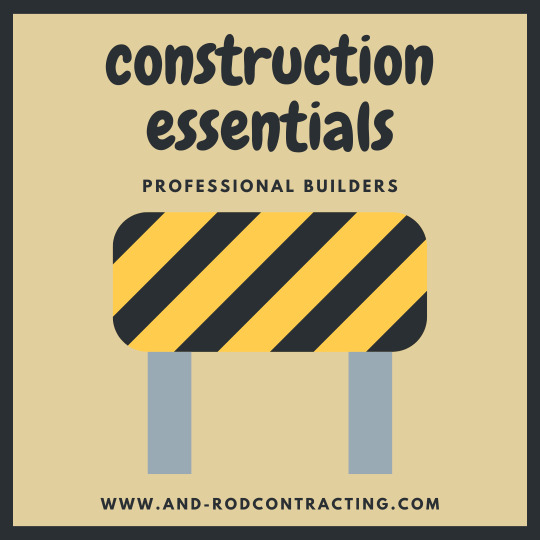
Measuring and Layout Tools
Every great build starts with accuracy. Without precise measurements and layouts, nothing fits together properly. These tools help ensure everything is aligned and measured correctly.
Laser Levels – These are essential for ensuring walls, floors, and foundations are perfectly leveled and aligned. They project a straight beam, making it easy to set reference points over long distances.

Tape Measures – A builder's best friend, tape measures help with quick and accurate measurements for framing, cutting materials, and layout planning.
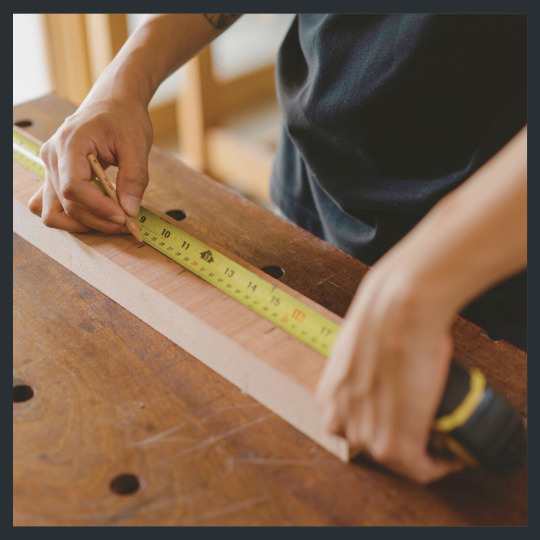
Chalk Lines – These are used to create straight, visible lines on different surfaces. Chalk lines help guide cuts and installations, especially for flooring and drywall projects.
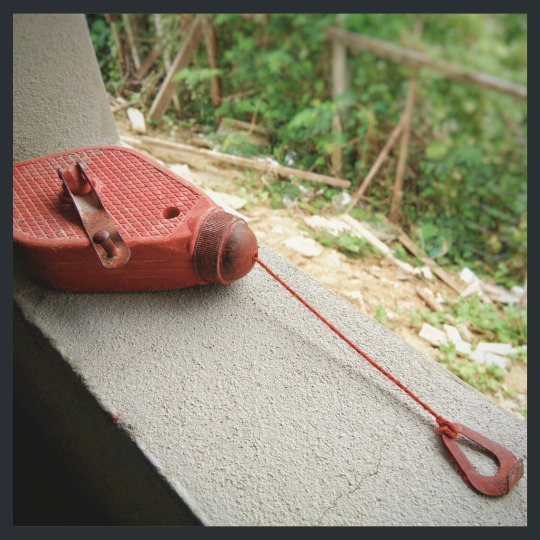
Cutting and Shaping Tools
From wood to metal, builders need sharp, powerful tools to cut materials precisely.
Circular Saws – These powerful saws are essential for cutting wood, plywood, and framing materials quickly and efficiently. Different blades allow for cutting various materials like plastic or metal.
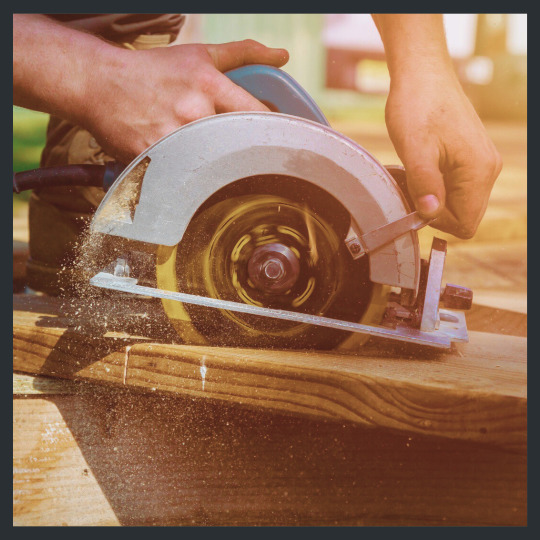
Table Saws – With a stable base and a powerful motor, table saws allow builders to make precise straight cuts, making them essential for carpentry and cabinetry work.

Reciprocating Saws – Also known as “Sawzalls,” these saws are ideal for demolition work, quickly cutting through wood, drywall, and even metal pipes.
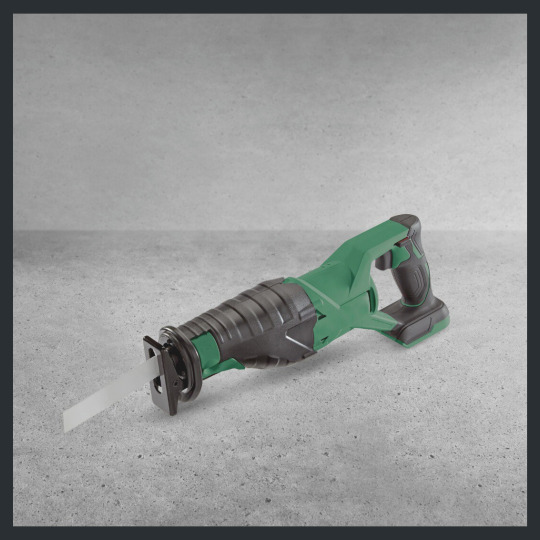
Chisels and Planes – Used for shaping and smoothing wood, chisels help with detailed carpentry work, while planes are excellent for refining rough surfaces and achieving a polished finish.

Fastening and Assembly Tools
For a structure to last, strong and secure connections are essential. These tools allow builders to efficiently join materials.
Nail Guns – Instead of hammering each nail manually, builders use nail guns to speed up framing, roofing, and trim work. These tools ensure strong, secure attachments in a fraction of the time.
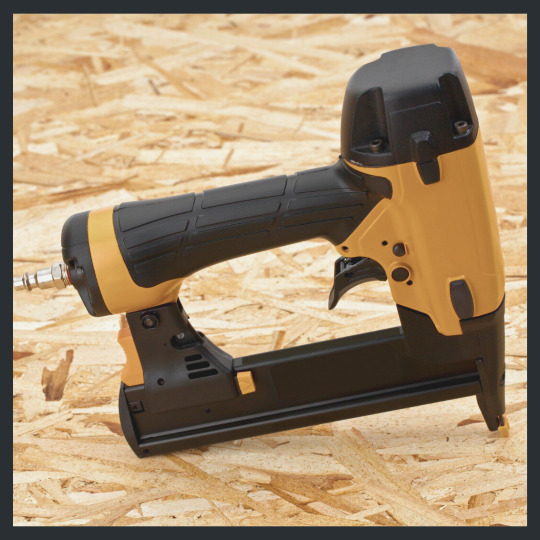
Impact Drivers & Drills – Essential for driving screws and bolts, these power tools make assembling structures easier and more efficient, especially for working with dense materials like hardwood or concrete.
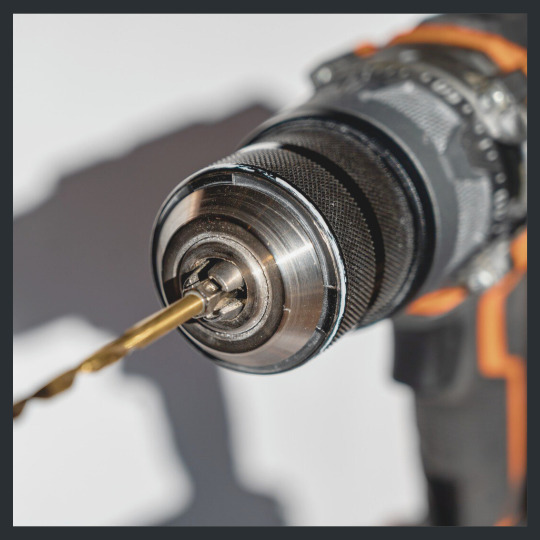
Clamps – Holding materials in place during construction is critical, and clamps help secure pieces together while glue sets or screws are installed, preventing movement and ensuring precision.
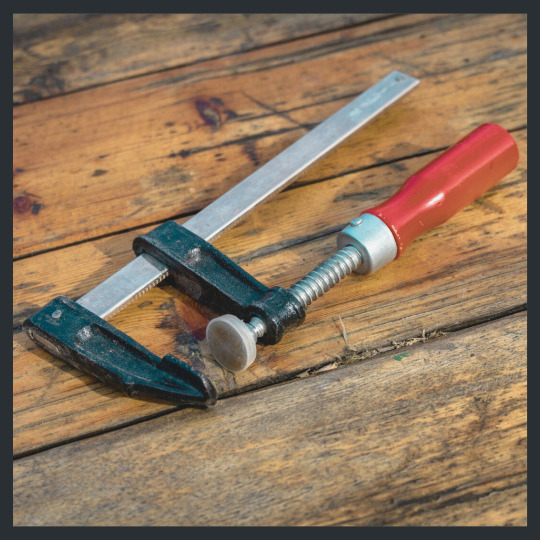
Masonry and Concrete Tools
Concrete and masonry work require specialized tools to ensure strength, stability, and a smooth finish. These tools help builders work efficiently with cement, stone, and bricks.
Trowels and Floats – Used to spread and smooth out concrete, trowels ensure a polished, professional finish, while floats help compact and level wet concrete.
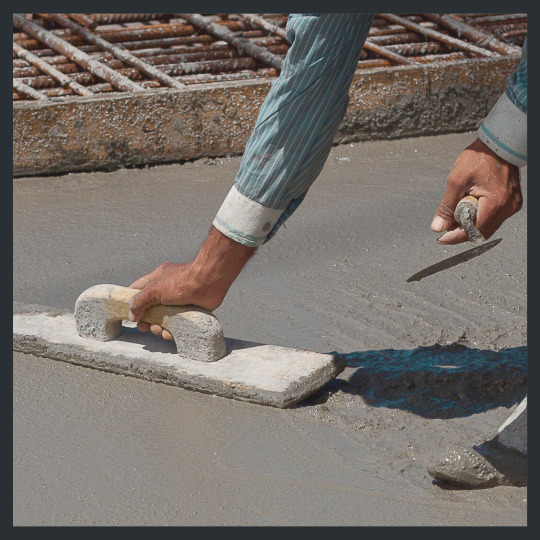
Concrete Mixers – Manually mixing concrete can be labor-intensive, so mixers automate the process, ensuring the right consistency for pouring slabs, foundations, and sidewalks.
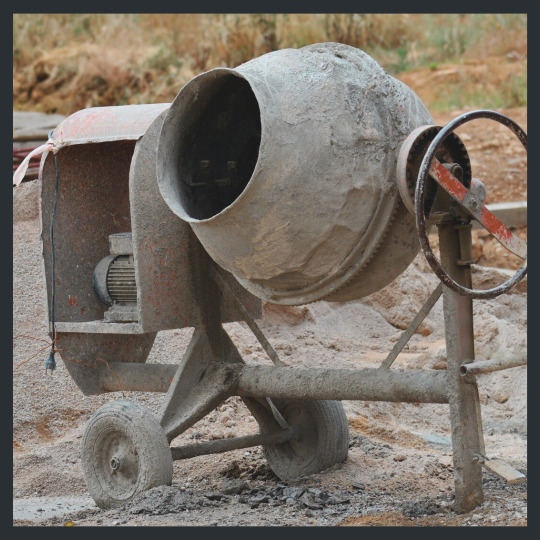
Rebar Cutters and Benders – Concrete needs reinforcement, and these tools allow builders to cut and shape steel reinforcement bars to fit structural designs accurately.
Safety and Protection Gear
Safety is a top priority on any construction site. Proper protective gear ensures that builders can work confidently while minimizing risks and accidents.
Hard Hats & Safety Glasses – Protecting against falling debris and impact hazards, these are mandatory on any construction site to prevent head and eye injuries.
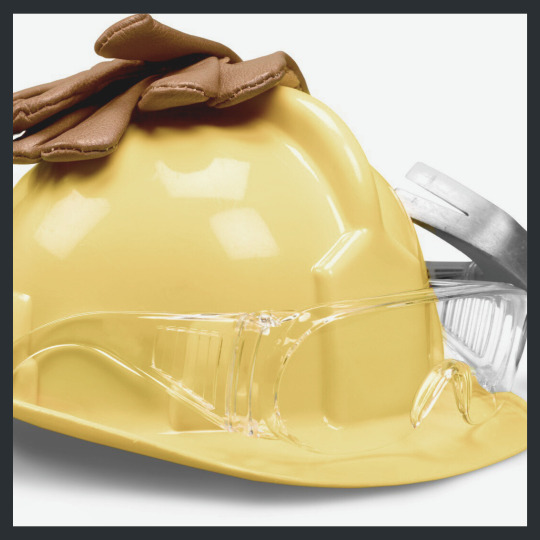
Hearing Protection – Power tools and machinery generate loud noises that can damage hearing over time. Earplugs or earmuffs help reduce exposure to dangerous noise levels.

High-Visibility Clothing – Construction sites can be busy and hazardous, so wearing reflective vests and bright-colored clothing ensures that workers are easily seen, improving overall site safety.

Using the right tools not only makes construction projects more efficient but also ensures that structures are built to last. Professional builders in Bruce Peninsula depend on these essential tools to create high-quality homes and buildings suited to the local environment.
Contact And-Rod Construction Today!
For expert craftsmanship and top-tier professional building in Bruce Peninsula, trust And-Rod Construction. With years of experience, our dedicated team, and the latest tools and techniques, we handle projects with precision and care. Whether you're planning a custom home, a renovation, or a residential build, we ensure durability, functionality, and a flawless finish. Contact And-Rod Construction today to bring your vision to life with trusted expertise and superior workmanship.
#AndRodConstruction#BrucePeninsula#ConstructionEssentials#CuttingAndShapingTools#FasteningAndAssemblyTools#MasonryAndConcreteTools#MeasuringAndLayoutTools#ProfessionalBuilders#SafetyAndProtectionGears#construction tools#canada#tobermory#bruce peninsula#bruce county#construction#construction company
2 notes
·
View notes
Text
Pool Construction and Key Considerations
Pool construction is a complex and detailed process that requires careful planning and execution. Whether you're building a residential pool or a commercial one, it involves various stages, from design to installation, ensuring safety, functionality, and aesthetic appeal. Understanding the essential aspects of pool construction can help homeowners and developers make informed decisions and avoid costly mistakes. This article highlights the steps involved in pool construction and key considerations to keep in mind. If you are looking for pool construction service, you can explore Outertainment Construction Inc.

Stages of Pool Construction
Planning and Design
The first step in pool construction is determining the type, size, and style of the pool that best suits the available space and budget. Homeowners or developers should consider factors such as the intended use of the pool, the landscape, and the pool's functionality. Custom pools may involve unique features like waterfalls, lighting, and heating systems. It is crucial to work with a professional pool designer or contractor who can help create a blueprint that meets safety standards and aesthetic goals.
Excavation
Once the design is finalized, excavation begins. This process involves digging the area where the pool will be located, typically with heavy machinery. The size and shape of the excavation depend on the pool design. During excavation, it's essential to take precautions to prevent damage to surrounding landscaping or underground utilities. Proper grading ensures the pool is level and has the correct slope for proper drainage.
Pool Structure and Plumbing Installation
After excavation, the pool's structural framework is built. This step involves the installation of steel reinforcement bars (rebar) or concrete forms, depending on whether the pool is a concrete, fiberglass, or vinyl liner type. Plumbing installation is a critical part of the process, as it includes the pipes for the pool's filtration and circulation system. A properly designed plumbing system ensures water quality and circulation throughout the pool. Refer Link: https://outertainment.com/.
Pool Finishing and Surface
The next stage involves finishing the pool surface, which can vary depending on the pool type. Concrete pools are often finished with plaster, while fiberglass pools come with a pre-made shell. The surface is essential not only for the appearance of the pool but also for its long-term durability and ease of maintenance.
Pool Equipment Installation
Once the pool structure is complete, the necessary pool equipment, such as pumps, filters, heaters, and lights, is installed. The equipment ensures the pool functions efficiently and remains clean and safe for swimming. Proper installation and maintenance of this equipment are essential for the pool’s long-term performance.

Conclusion
Pool construction is a multi-step process that involves careful planning, skilled labor, and attention to detail. From the design phase to the installation of equipment, each stage plays a crucial role in creating a high-quality pool. Whether building a backyard oasis or a commercial swimming pool, understanding the stages and key considerations ensures a successful project and long-term enjoyment.
2 notes
·
View notes
Text
Ground Penetrating Radar Survey in Delhi: A Reliable Solution for Subsurface Exploration
In today’s rapidly growing world, accurate subsurface investigation plays a crucial role in various industries. Whether it's for construction, infrastructure development, or environmental research, knowing what lies beneath the surface is vital for making informed decisions. A ground penetrating radar survey in Delhi offers a non-invasive, efficient, and reliable way to explore subsurface conditions. From detecting underground utilities to identifying structural issues, GPR provides real-time, detailed data for a range of applications.
What is Ground Penetrating Radar (GPR)?
Ground Penetrating Radar (GPR) is an advanced technology that uses electromagnetic waves to scan and map the subsurface. A ground penetrating radar survey in Delhi sends high-frequency radio waves into the ground. These waves bounce back when they hit an object or material with different properties, such as utilities, voids, or rocks. The reflected signals are recorded and processed to create a detailed image of the subsurface, allowing professionals to assess the underground structure without excavation.
This method is highly effective in detecting underground utilities, voids, and even structural abnormalities. It's a valuable tool for industries such as construction, archaeology, and environmental studies, providing precise data while minimizing disruption to the site.
Applications of Ground Penetrating Radar Survey
Utility Mapping and Detection: One of the most common uses of a ground penetrating radar survey in Delhi is utility mapping. Before beginning any construction or excavation project, it is essential to know where underground utilities are located to prevent accidental damage. GPR can accurately detect a variety of utilities such as water pipes, electrical cables, gas lines, and sewer systems. This ensures the safety and smooth progression of construction projects by preventing costly mistakes.
Cavity Detection: Another important application of a ground penetrating radar survey in Delhi is cavity detection. Underground voids or cavities can pose a serious risk to the stability of a structure or project site. These voids can form due to erosion, mining, or natural processes and may go unnoticed without proper detection. GPR is highly effective in locating these subsurface cavities, which allows engineers to take preventive measures before any damage occurs.
Structural Integrity Assessment: GPR is commonly used for structural assessments, particularly for concrete structures such as roads, bridges, and buildings. A ground penetrating radar survey in Delhi can be used to examine the condition of concrete, detect cracks, delamination, or corrosion, and assess the placement of rebar. By performing these inspections, engineers can ensure the safety and integrity of existing structures, preventing costly repairs and ensuring long-term durability.
Archaeological Investigations: In archaeology, a ground penetrating radar survey in Delhi is a non-invasive method used to locate buried structures, artifacts, and remains. This technique is highly beneficial for preserving historical sites, as it allows archaeologists to explore without the need for excavation. By using GPR, archaeologists can gather valuable data on the location of buried objects and determine where further digging may be needed.
Environmental Studies: GPR is also used in environmental studies to assess the condition of the land, identify contaminants, and locate buried waste or landfills. A ground penetrating radar survey in Delhi can help environmental engineers identify areas that require remediation and guide cleanup efforts without disturbing the environment. The ability to gather accurate subsurface data is crucial for environmental safety and monitoring.
Why Choose Ground Penetrating Radar Survey in Delhi?
There are several reasons why the ground penetrating radar survey in Delhi is becoming the preferred method for subsurface exploration:
Non-Invasive Technique: One of the key benefits of GPR is that it is non-invasive, meaning it doesn’t require excavation or disturbing the ground. This makes it an environmentally friendly and efficient method for obtaining subsurface data without disrupting the site.
Real-Time Data: The ground penetrating radar survey in Delhi provides real-time results, allowing professionals to interpret data immediately. This quick turnaround helps with faster decision-making and reduces project delays, which is especially important in industries like construction and infrastructure.
Accurate and Detailed Results: GPR offers highly accurate and detailed images of the subsurface, providing valuable insights into what lies beneath the surface. The data collected can be used to assess the presence of utilities, voids, or other underground structures, allowing professionals to plan projects more effectively.
Versatility: A ground penetrating radar survey in Delhi can be used in various environments, from urban areas to remote locations. It works on a range of surfaces including concrete, asphalt, soil, and rock, making it a versatile tool for many industries.
Cost-Effective: Since GPR eliminates the need for extensive excavation, it significantly reduces the cost and time associated with traditional survey methods. This makes it an affordable option for projects of all sizes.
How Does a Ground Penetrating Radar Survey Work?
The process of conducting a ground penetrating radar survey in Delhi is straightforward, though it requires trained professionals to ensure accurate results:
Site Preparation: The first step involves assessing the survey site. The ground conditions, such as soil type and surface materials, are evaluated to determine the best approach for the GPR survey.
Survey Setup: Once the site has been assessed, the GPR equipment is set up. This can involve either handheld devices or larger vehicle-mounted systems, depending on the size of the area to be surveyed.
Data Collection: The GPR unit sends electromagnetic pulses into the ground. These pulses travel through the subsurface and reflect back when they encounter materials with different densities, such as utilities or geological layers. The system records the reflected signals.
Data Analysis: The collected data is then processed to generate detailed images of the subsurface. This data is interpreted by professionals to identify any anomalies, such as utilities, voids, or other structures.
Report Creation: After analyzing the data, a detailed report is generated, including the findings and recommendations. This report can be used for further planning and decision-making.
Conclusion
A ground penetrating radar survey in Delhi is an invaluable tool for anyone involved in construction, archaeology, environmental studies, or any project that requires a detailed understanding of subsurface conditions. It offers an accurate, non-invasive, and cost-effective way to explore what lies beneath the surface. Whether you need to detect utilities, locate voids, assess structural integrity, or conduct archaeological investigations, GPR provides reliable and timely data that helps professionals make informed decisions.
With its ability to provide real-time data and its versatility across different applications, the ground penetrating radar survey in Delhi is the go-to solution for anyone needing a thorough, efficient, and safe subsurface investigation. If you are planning any project that involves underground exploration, a GPR survey is the best way to proceed with confidence.
#ground penetrating radar survey in delhi#Geophysical instruments provider in India#Ground penetrating radar instrument provider in Delhi#GPR instrument provider in Delhi
2 notes
·
View notes
Text
The Importance of Steel Factory in Modern Industry
Steel Factory play a pivotal role in modern infrastructure and industrial development. As the backbone of construction, manufacturing, transportation, and various other sectors, steel production is essential to creating the durable materials that shape our daily lives. From skyscrapers to automobiles, bridges to household appliances, steel is an indispensable resource that drives economic growth and innovation.

What is a Steel Factory?
A steel factory, also known as a steel mill, is a facility where raw materials such as iron ore, coal, and limestone are transformed into steel. These factories are responsible for producing different types of steel, each with varying characteristics and properties depending on its intended use. Steel factories utilize a combination of processes, including melting, casting, rolling, and shaping, to produce steel in the form of sheets, bars, coils, or beams.
There are two primary types of steel mills:
Integrated Steel Mills: These plants handle the entire production process, from refining raw materials to producing finished steel.
Mini Mills: These focus on recycling scrap steel and refining it into new steel products, contributing to sustainable manufacturing practices.
The Steel Production Process
The production of Steel Factory involves several key steps. The most common method is the Basic Oxygen Furnace (BOF) process, while the Electric Arc Furnace (EAF) method is used in mini mills for recycling scrap metal.
Ironmaking: The first step involves extracting iron from iron ore in a blast furnace. The furnace heats the ore along with coke (a carbon-rich substance derived from coal) and limestone, producing molten iron and slag (a by-product used in other industries).
Steelmaking: In the steelmaking phase, molten iron is combined with scrap metal and oxygen to reduce carbon content and impurities. This process, typically done in a basic oxygen furnace, creates liquid steel.
Casting: The liquid steel is then poured into molds to create solid shapes, which can include slabs, billets, and blooms. These are the raw forms of steel that will be further processed.
Rolling and Shaping: After cooling, the steel is rolled into thinner sheets or shaped into desired forms, such as bars or beams. These products are then ready for industrial use.
Finishing: Depending on the intended use of the steel, additional processes such as heat treatment, coating, or surface treatments may be applied to enhance durability, corrosion resistance, and aesthetic appeal.
The Role of Steel Factories in Infrastructure
Steel is a foundational material in modern infrastructure. Steel Factory supply the structural components needed for building everything from bridges to high-rise buildings. Steel’s strength, flexibility, and resilience make it the ideal material for supporting heavy loads and withstanding environmental stressors.
Construction: Steel beams, girders, and rebar are essential components in large-scale construction projects, providing stability to buildings and bridges.
Transportation: Steel factories produce materials for the automotive, shipbuilding, and railway industries. From the frames of vehicles to the tracks that trains run on, steel is integral to modern transportation systems.
Energy: Steel is used in the construction of oil rigs, wind turbines, and pipelines, playing a crucial role in energy infrastructure.
Steel Factories and Sustainability
As concerns about climate change and environmental degradation grow, steel factories are making significant strides toward sustainability. Many steel producers are shifting towards eco-friendly methods, such as using Electric Arc Furnaces to recycle scrap metal and adopting cleaner technologies that reduce emissions.
Innovations in Steel Manufacturing
Steel Factory are at the forefront of technological innovation. Advances in automation, artificial intelligence, and robotics have transformed the industry, increasing efficiency and reducing costs. Some key innovations include:
High-Strength Steel: New steel alloys are being developed that offer higher strength while using less material, making them more environmentally friendly and cost-effective.
3D Printing with Steel: The rise of additive manufacturing has introduced the possibility of 3D printing with steel, which could revolutionize industries such as aerospace and automotive engineering.
Smart Factories: The integration of IoT (Internet of Things) devices allows for better monitoring of equipment and processes in steel mills, optimizing production and minimizing downtime.
Conclusion
Steel Factory are the cornerstone of industrial progress. They provide the raw materials necessary for countless industries, from construction to transportation and energy. As technological advancements and environmental concerns shape the future of steel production, these factories continue to adapt and innovate, ensuring that steel remains a vital part of modern life.
The next time you see a skyscraper, drive a car, or walk across a bridge, remember that it all started in a steel factory—a place where raw materials are transformed into the building blocks of our world.
Metal Berg Manufacturing Company Factory
Block 16 Plot 283, Green Estate, Amuwo Odofin Estate 102102, Lagos, Nigeria
+234 803 044 2676
2 notes
·
View notes
Text
Basalt Rebars Market set to hit $1428.3 million by 2035
Industry revenue for Basalt Rebars is estimated to rise to $1428.3 million by 2035 from $354.7 million of 2024. The revenue growth of market players is expected to average at 13.5% annually for the period 2024 to 2035.
Basalt Rebars is critical across several key applications including construction & rehabilitation, road infrastructure, marine structures and bridges & tunnels. The report unwinds growth & revenue expansion opportunities at Basalt Rebars’s Product Type, Application, Manufacturing Process and Diameter Size including industry revenue forecast.
Industry Leadership and Competitive Landscape
The Basalt Rebars market is characterized by intense competition, with a number of leading players such as Technobasalt-Invest LLC, Mafic SA, Isomatex SA, Sudaglass Fiber Technology, Composites Evolution Ltd, Asamer Basaltic Fibers GmbH, Neuvokas Corp, Shanxi Basalt Fiber Technology Co Ltd, Fibers Direct LLC, GBF Basalt Fiber Co, Technoimac Ltd and Kamenny Vek.
The Basalt Rebars market is projected to expand substantially, driven by rising demand for durable construction materials and sustainable construction practices. This growth is expected to be further supported by Industry trends like Advanced Technological Implementations.
Detailed Analysis - https://datastringconsulting.com/industry-analysis/basalt-rebars-market-research-report
Moreover, the key opportunities, such as sustainability goals igniting demand, increased infrastructure development in developing countries and marine construction applications, are anticipated to create revenue pockets in major demand hubs including U.S., Germany, China, Japan and India.
Regional Shifts and Evolving Supply Chains
North America and Europe are the two most active and leading regions in the market. With challenges like high production costs and lack of awareness, Basalt Rebars market’s supply chain from raw material extraction / basalt fiber production / rebar manufacturing to end use/ application is expected to evolve & expand further; and industry players will make strategic advancement in emerging markets including Vietnam, Nigeria and Chile for revenue diversification and TAM expansion.
About DataString Consulting
DataString Consulting offers a complete range of market research and business intelligence solutions for both B2C and B2B markets all under one roof. We offer bespoke market research projects designed to meet the specific strategic objectives of the business. DataString’s leadership team has more than 30 years of combined experience in Market & business research and strategy advisory across the world. DataString Consulting’s data aggregators and Industry experts monitor high growth segments within more than 15 industries on an ongoing basis.
DataString Consulting is a professional market research company which aims at providing all the market & business research solutions under one roof. Get the right insights for your goals with our unique approach to market research and precisely tailored solutions. We offer services in strategy consulting, comprehensive opportunity assessment across various sectors, and solution-oriented approaches to solve business problems.
0 notes
Text
Basalt fiber market poised for exponential growth amid rising demand in construction and automotive industries.
In recent years, basalt fiber market has emerged as a strong contender in the field of advanced materials, offering a unique blend of strength, durability, and sustainability. As industries worldwide seek efficient, eco-friendly, and high-performance alternatives to traditional materials, basalt fiber is gaining traction, particularly in the construction and automotive sectors. The market for basalt fiber is not only growing—it is on the brink of exponential expansion.

What is Basalt Fiber?
Basalt fiber is produced by melting naturally occurring basalt rock at high temperatures and then extruding it into fine filaments. Unlike synthetic fibers such as fiberglass or carbon fiber, basalt fiber is made from a single raw material and does not require any additives. This natural origin lends the fiber an edge in sustainability, while its mechanical properties make it ideal for a wide range of demanding applications.
Growing Demand in the Construction Sector
The construction industry has traditionally relied on materials like steel, concrete, and fiberglass. However, growing concerns about environmental impact, rising raw material costs, and the demand for longer-lasting structures are pushing developers to explore new options. Basalt fiber is increasingly being used in reinforcing concrete, producing rebar, and in composite panels due to its corrosion resistance, high tensile strength, and thermal stability.
Basalt rebar, for instance, offers a non-corrosive alternative to steel rebar, which often deteriorates in harsh environments or over time, leading to expensive repairs and replacements. Bridges, tunnels, coastal structures, and buildings in extreme climates can benefit significantly from the use of basalt fiber, extending their life spans and reducing maintenance costs.
Moreover, basalt fiber is lightweight, making it easier to transport and handle on construction sites. This not only reduces labor costs but also accelerates project timelines—a critical advantage in today’s fast-paced construction landscape.
Revolutionizing the Automotive Industry
The automotive industry is another major catalyst for the basalt fiber boom. As automakers face increasing pressure to meet stringent emissions regulations and fuel efficiency standards, the demand for lightweight yet durable materials is surging. Basalt fiber composites offer a solution that aligns well with these goals.
Compared to traditional materials like steel and even aluminum, basalt fiber is significantly lighter while maintaining excellent strength-to-weight ratios. It also performs well under extreme temperatures and resists wear and tear, making it suitable for under-the-hood applications, body panels, and even structural components. Additionally, its natural fire resistance and low smoke toxicity make it a safer option in case of vehicle accidents or fires.
With the rise of electric vehicles, the need for innovative lightweight materials is even more pronounced. Lighter vehicles translate directly to increased battery range—a key selling point in the EV market. As a result, automakers are increasingly incorporating basalt fiber into their design and manufacturing processes.
Sustainability and Cost Advantages
One of the most appealing aspects of basalt fiber is its sustainability. The production process generates minimal waste and emissions, especially compared to the energy-intensive manufacturing of carbon fiber. Additionally, basalt is abundant in nature, widely available across the globe, and requires no chemical treatments or additives, making it an environmentally responsible choice.
From a cost perspective, basalt fiber is often more affordable than carbon fiber while delivering comparable performance in many applications. This price-performance balance makes it an attractive option for industries seeking high-performance materials without significantly inflating costs.
Looking Ahead
As awareness of basalt fiber's benefits continues to spread, its adoption is expected to skyrocket. Ongoing research and development are expanding its capabilities, creating new composite formulations, and optimizing manufacturing techniques to scale up production. Countries investing in infrastructure development and sustainable manufacturing are likely to be key markets for basalt fiber in the coming years.
In conclusion, the basalt fiber market is on a trajectory of rapid growth, driven by the dual engines of construction and automotive demand. As industries evolve to meet modern challenges, basalt fiber stands out as a material of the future—combining strength, sustainability, and versatility in a way few others can match.
0 notes
Text
Understanding Reinforced Concrete and Its Place in KP Organisation's Structural Stability

With every passing day, the world of construction is changing. Reinforced concrete is one pillar of strength, durability, and stability that stands the test of time. At KP Organisation, best home builders in gurgaon one of Gurgaon's top construction contracting companies, the use of reinforced concrete in housing and commercial projects is a part of the strategy towards providing long-term safety and architectural excellence. With years of experience in construction, interior designing, petrol pump installation, transport, and consultancy services, KP Organisation has seen with its naked eye the unparalleled benefits of utilizing reinforced concrete in construction work.
What is Reinforced Concrete?
Reinforced concrete, or RC, is a hybrid composite in which the strength of concrete under compression is paired with the tensile strength of steel. Even though the concrete itself is highly resistant to compression on its own, it does not have much tensile strength. best home builders in gurgaon Engineers merge the concrete by including steel mesh or bars, otherwise referred to as rebar, in the composition to make a material which is capable of holding a massive load and amount of pressure and, therefore, is more suited to heavy-use functions such as bridges, high-rise buildings, factory buildings, and family houses.
The Role of Reinforced Concrete in Structural Stability
Structural safety is most important in any building construction, and the reinforced concrete is in charge of fulfilling that. The mixture of steel and concrete makes the buildings resistant to:
Seismic loads
Capable of withstanding tough environmental conditions
Enabling multi-story buildings
Long-term durability
At KP Organisation, as one of the prominent home builders in Gurgaon, the application of high-grade reinforced concrete has become the norm for guaranteeing the safety and durability of our structures.
Benefits of Reinforced Concrete in Construction
Longevity and Long Life
Reinforced concrete structures are highly durable and can last for decades with little or no maintenance. To home builders in Gurgaon, it translates to providing customers with a safe and secure living space.
Fire and Weather Resistance
Concrete is non-combustible and offers excellent fire protection, which is why it makes a good material to use in offices and homes. With the experience of KP Organisation operating in construction firms in Gurgaon, reinforced concrete is a good option for clients seeking secure property choices.
Flexibility in Design
Concrete wet plasticity provides the ability to form a variety of architectural shapes. With the assistance of steel reinforcement, architects can potentially extend the boundaries of imagination while still providing safety assurance. This is especially important for Gurgaon custom home builders who create bespoke home design.
Cost Efficiency Over Time
While the initial cost of reinforced concrete may be more compared to other materials, the long-term advantages — fewer maintenance costs and fewer structural problems — ensure it is a cost-effective option in the long term.
Why KP Organisation Uses Reinforced Concrete
Being experienced contractors based in Gurgaon, KP Organisation has been known to build quality, be dependable, as well as deliver client satisfaction. We depend purely on reinforced concrete since this agrees with our creed of providing healthy structures in terms of buildings to meet the demands of contemporary lifestyles. Whether looking for house construction companies in Gurgaon for constructing new houses or domestic contract companies in Gurgaon for implementing a multiple housing unit development, our company ensures that every project is reinforced to perfection.
Uses in Different Projects
Residential Projects
For homeowners who want the ultimate in home security and looks, reinforced concrete is unmatched in terms of stability. KP Organisation, as a builder of residential homes in Gurgaon, utilizes this material for foundations, beams, slabs, and columns to build strong homes.
Commercial Complexes
High-rise commercial buildings require materials that can withstand heavy usage and loads. Reinforced concrete is highly sought after by the builders of commercial buildings in Gurgaon due to its high strength within a building and fire resistance.
Luxury Houses and Custom Construction
As Gurgaon's luxury house builders, KP Organisation is meticulous in ensuring that every bespoke design stands the test of time. Reinforced concrete retains fine architectural elements while giving the building a good foundation.
Infrastructure and Mixed-Use Developments
With our extensive range of services, such as transport and petrol pump developments, reinforced concrete enables us to deliver uniformity and durability at all levels.
KP Organisation's Process: From Conceptualisation to Implementation
Our experienced architects, engineers, and project managers ensure that every phase of the construction process — design to implementation — meets industry standards. This is how we assure reinforced concrete utilization:
Site Analysis and Load Calculation
Soil strength, building needs, and anticipated load capacity are established before building.
Material Selection
High-quality steel and concrete in isolation are chosen, guaranteeing long-term performance.
Reinforcement Planning
We position and design steel bars in an efficient manner to handle tension forces.
Mixing and Pouring
We mix and pour concrete under highly controlled conditions without any compromise on quality.
Curing and Finishing
We perform curing with caution to avoid cracking and enhance the strength of structures.
Innovation in Reinforced Concrete
With technologies progressing at an increasing rate, present-day reinforced concrete also incorporates innovation such as rebar with anti-corrosive properties, reinforcement through fibers, and self-repairing concrete. KP Organisation remains at the leading edge of developments by applying the latest techniques of construction for offering our customers the most optimum solutions.
When constructing state-of-the-art apartments, traditional houses, or state-of-the-art office complexes, our position as Gurgaon's best contractors originates from our willingness to change and adapt to latest trends in the industry.
Why Choose KP Organisation?
Here are some of the reasons why KP Organisation stands higher in comparison to other Gurgaon construction companies:
Established Record in Resi and Comm Projects
Specialisation in RCC and Green Building Methodologies
Holistic services ranging from interior design, consulting, and logistics transport
Client-centric services with utmost openness
If you are in search of house construction firms in Gurgaon or Gurgaon custom builders who appreciate the true value of structural integrity, then you need to go no further than KP Organisation.
Conclusion
Reinforced concrete has revolutionized the building industry and remains the foundation for secure, strong, and good-looking structures. KP Organisation, one of the best construction contractors in Gurgaon, views this material as its top priority in every project for client satisfaction and structural quality. Whether constructing a dream house or constructing a commercial complex, reinforced concrete provides a sound solution for durable performance.
Leave the execution of your vision to KP Organisation with the power, precision, and professionalism.
0 notes
Text
The Importance of Rebar Scanning Services in Modern Construction

Concrete structures form the backbone of modern infrastructure, from towering skyscrapers to bridges and tunnels. However, ensuring their strength and durability requires careful planning and assessment. One essential process that helps prevent costly errors and enhances safety is rebar scanning services. This technology detects embedded reinforcement bars within concrete, allowing engineers and construction professionals to work with precision.
In this article, we will explore the importance of rebar scanning, its benefits, the latest technological advancements, and how it contributes to the longevity of concrete structures.
1. Understanding Rebar Scanning Services
What is Rebar Scanning?
Rebar scanning is a non-destructive testing (NDT) method that uses ground-penetrating radar (GPR) and electromagnetic induction technology to locate reinforcement bars embedded in concrete. This process helps engineers determine the placement and condition of rebar without damaging the structure.
How Does Rebar Scanning Work?
Rebar scanning services typically involve using handheld or cart-mounted scanners that emit radar signals into the concrete surface. These signals bounce back when they encounter metal objects, allowing technicians to create a detailed map of the rebar layout. Advanced software then interprets this data, providing engineers with crucial insights about the structure’s integrity.
2. The Benefits of Rebar Scanning Services
Enhancing Structural Integrity
Rebar scanning ensures that concrete structures are built according to design specifications. By confirming proper rebar placement, engineers can enhance the overall strength and longevity of the construction project.
Preventing Costly Errors and Rework
Construction mistakes, such as cutting into rebar or missing reinforcement during drilling, can lead to expensive repairs. Rebar scanning prevents these issues by providing accurate data before any modifications are made.
Improving Safety for Workers and the Public
Accidentally striking rebar or post-tension cables during construction can be dangerous. By using rebar scanning services, construction teams can avoid hazards, ensuring a safer worksite.
Supporting Compliance with Building Codes
Many building regulations require accurate rebar placement for safety and durability. Rebar scanning services help contractors comply with these codes, reducing the risk of legal and structural complications.
Increasing Efficiency in Construction Projects
By offering real-time insights into a structure’s reinforcement layout, rebar scanning helps project managers make informed decisions quickly, minimizing delays and improving workflow efficiency.
3. Applications of Rebar Scanning in Construction
Pre-Construction Assessment
Before beginning any construction work, rebar scanning can be used to verify the condition of existing structures and determine if additional reinforcement is needed.
Concrete Coring and Drilling
Rebar scanning ensures that coring and drilling are done without damaging reinforcement bars, preventing costly structural damage and delays.
Structural Renovations and Retrofitting
When modifying or upgrading existing buildings, knowing the exact placement of rebar helps engineers plan safely and effectively.
Bridge and Tunnel Inspections
Rebar scanning is crucial for assessing the condition of bridges and tunnels, ensuring their continued safety and functionality.
Post-Construction Quality Control
Once a structure is built, rebar scanning can confirm that reinforcement was installed correctly, serving as a final quality assurance step.
4. Advanced Technologies in Rebar Scanning
Ground-Penetrating Radar (GPR)
GPR is the most commonly used technology for rebar scanning. It provides high-resolution images of reinforcement within concrete structures, allowing precise detection of depth and spacing.
Electromagnetic Induction (EMI) Scanners
EMI scanners use electromagnetic fields to detect metal objects within concrete, providing a quick and efficient method for identifying rebar locations.
3D Scanning and Digital Mapping
Advanced software can now convert scanning data into 3D visual models, offering engineers a comprehensive view of reinforcement layouts.
AI-Powered Analysis
Artificial intelligence is enhancing rebar scanning by automating data interpretation, reducing human error, and improving overall accuracy.
5. Choosing the Right Rebar Scanning Service Provider
Experience and Expertise
Select a provider with extensive experience in rebar scanning to ensure accurate results and professional service.
Use of Advanced Technology
The best rebar scanning services employ state-of-the-art equipment and software to provide precise and reliable data.
Compliance with Industry Standards
Ensure that the service provider follows local and international construction standards, guaranteeing that their results are reliable and legally compliant.
Comprehensive Reporting and Analysis
A top-tier provider should offer detailed reports, including visual maps and expert recommendations for your construction project.
Customer Support and Consultation
Look for a provider who offers consultation and support throughout your project, helping you make informed decisions based on scanning results.
Conclusion
Rebar scanning services play a vital role in ensuring the durability and safety of concrete structures. With advancements in technology, this non-destructive testing method is becoming more precise, efficient, and indispensable in the construction industry. Whether for new projects, renovations, or inspections, utilizing rebar scanning enhances quality control, prevents costly mistakes, and ensures compliance with industry standards.
For professional rebar scanning services, trust On The Mark Locaters—your reliable partner in precision and safety. Contact us today to learn how we can support your next construction project!
Contact Us:
Address - 1080 S Chapel St. Suite 201 Newark, DE 19702
Email - [email protected]
Phone - 888-272-6065
Website - On The Mark Locators
Blog - The Importance of Rebar Scanning Services in Modern Construction
0 notes
Text
How to Build Durable Domes: A Step-by-Step Construction Guide
Dome construction has stood the test of time, symbolizing strength, elegance, and architectural ingenuity. From ancient temples and mosques to contemporary public and private buildings, domes continue to play a pivotal role in shaping skylines around the world. In India, the Rohtak Domes are prime examples of this enduring legacy—celebrated for their exceptional craftsmanship, structural integrity, and timeless design.
This guide walks through the step-by-step process of dome construction, blending traditional wisdom with modern techniques to ensure strength, beauty, and longevity.
1. Planning and Design: Laying the Foundation for Success
The journey of building a dome begins with thoughtful planning and precise design. Key considerations include:
Defining the Purpose: Identify whether the dome will serve a religious, cultural, public, or residential function.
Material Selection: Choose from traditional options like brick and stone or modern materials like concrete, steel, and composites, depending on the structure’s scale and purpose.
Structural Analysis: Assess environmental factors such as wind loads, seismic activity, and temperature variations to ensure long-term stability.
Architects often draw inspiration from heritage structures like the Rohtak Domes, incorporating their time-tested principles into contemporary dome designs.
2. Establishing a Strong Foundation
A durable and well-engineered foundation is crucial, as it bears the entire load of the dome. This phase involves:
Soil Testing: Analyze ground conditions to determine load-bearing capacity.
Excavation and Leveling: Prepare a stable and even base.
Reinforced Concrete Slab: Lay a robust concrete base to evenly distribute weight and ensure long-term durability.
The enduring strength of the Rohtak Domes is a testament to the importance of a solid foundation.
3. Constructing the Dome Framework
The framework is the skeleton that supports the dome’s shape and structure. Depending on the design, this may include:
Traditional Scaffolding: Wooden or steel frames used to guide brick or stone placement in heritage-style domes.
Geodesic Structures: Modern frameworks using interlocking triangles for superior strength with minimal materials.
Traditional methods used in the Rohtak Domes, particularly in masonry alignment and balance, continue to influence dome construction today.
4. Building the Dome Structure
This is the heart of the construction process, where the dome takes form:
Brick or Stone Laying: Materials are layered in a radial or concentric pattern to naturally form the dome’s curvature.
Concrete Pouring: For modern domes, a pre-shaped mold is used to cast monolithic concrete domes.
Steel Reinforcement: Adding rebar or mesh increases the structure’s resistance to natural stresses and improves longevity.
The balance of precision and artistry seen in the Rohtak Domes serves as a benchmark for quality dome construction.
5. Finishing, Decoration, and Protection
Once the structural work is complete, the final layers bring both protection and visual appeal:
Plastering and Detailing: Smooth finishes, carvings, mosaic inlays, and other artistic features enhance the visual richness.
Waterproofing: Application of protective coatings safeguards against leaks and weather damage.
Insulation and Ventilation: Ensures energy efficiency and thermal comfort inside the dome.
The decorative details of the Rohtak Domes show how functional and aesthetic elements can coexist beautifully.
6. Maintenance and Restoration
Longevity in dome construction requires consistent upkeep. This includes:
Regular Inspections: Check for cracks, settlement, or erosion.
Preservation of Decorative Elements: Restore aging artwork or structural features to their original condition.
Modern Reinforcement: Use contemporary materials to strengthen older domes without compromising their heritage value.
The Rohtak Domes have stood strong for generations thanks to mindful restoration and proactive maintenance.
Conclusion
Dome construction is a powerful expression of architectural heritage and innovation. With a structured, step-by-step approach—from planning and materials to construction and maintenance—builders can create domes that are not only visually captivating but also built to endure.
The legacy of historical masterpieces like the Rohtak Domes continues to influence modern architecture, proving that great design never goes out of style. Whether honoring traditional methods or embracing new technologies, dome construction remains a celebrated symbol of engineering excellence and cultural identity.
0 notes
Text
Vancouver’s Best Quality Rebar Detailing Services For Structural Projects, Canada

Silicon EC Canada’s team of certified rebar detailers combines advanced structural engineering knowledge with meticulous precision to deliver high-quality Rebar Detailing Services for complex concrete structures. Our experts possess in-depth understanding of reinforcement behavior under load, stress distribution mechanics, and concrete-steel composite interactions, ensuring optimized rebar placement that enhances structural durability while minimizing material inefficiencies. Through detailed analysis of reinforcement congestion, development length requirements, and structural connection detailing, we proactively resolve constructability challenges, facilitating seamless on-site execution. Our rigorous quality validation process guarantees that every shop drawing aligns with design specifications, reinforcing structural integrity and project efficiency from conception to completion.
Our Services
Rebar Shop Drawings Services
Reinforcement Detailing Services
Bar Bending Schedule Services
Rebar CAD Detail Drawings Services
Rebar 2D and 3D Modeling Services
Rebar Walls Detailing Services
We deliver precision-engineered CAD Drawings, Structural plans, and material take-offs, rigorously compliant with project specifications and Canadian Building Codes. Our technical excellence is demonstrated through 3D modeling and BIM integration, enabling proactive clash detection and optimization of reinforcement geometry, including exact calculations for lap lengths, anchorage requirements, and development lengths to ensure structural efficacy. We specialize in error-free, construction-ready detailing, resolving complex reinforcement challenges while maximizing material efficiency. Serving AEC clients across Canada, in cities like Toronto, Montreal, Vancouver, Calgary, Ottawa, Edmonton, Quebec City, Hamilton, Winnipeg, Kitchener-Waterloo, we are dedicated to providing top-tier structural detailing solutions that address the unique structural demands of every project.
For Rebar Detailing
For Structural Services
For more details visit us at
#Rebar#Steel#Concrete#Structure#Concrete Structures#Structural Detailing#Rebar Detailing#Rebar Detailing Drawings#Rebar Plans#Rebar Placements#Reinforcement Detailing#Structural Detailing Plans#Structural drawings#Rebar Shop Drawings#Structural Engineering#Canada
0 notes
Text
The Ultimate Guide to Concrete Slabs Sydney: Benefits, Uses, and Expert Installation
Why Concrete Slabs Sydney Are the Best Choice for Your Construction Needs
When it comes to construction and landscaping projects in Sydney, concrete slabs are one of the most reliable and durable choices. Whether you’re building a new home, designing an outdoor entertainment area, or laying a foundation for a commercial space, choosing high-quality concrete slabs Sydney ensures longevity, strength, and aesthetic appeal.
With Sydney’s varying climate conditions and the need for stable, long-lasting structures, concrete slabs are the preferred option for homeowners, builders, and businesses alike. From driveways and patios to footpaths and industrial flooring, these slabs offer versatility and functionality that few other materials can match.
Benefits of Using Concrete Slabs Sydney for Your Project
Durability and Strength
One of the primary reasons why concrete slabs Sydney are widely used is their durability. Unlike other materials that may crack or warp over time, concrete slabs offer a solid and stable foundation that can withstand heavy loads, high foot traffic, and extreme weather conditions.
Sydney experiences both hot summers and rainy winters, making it crucial to choose a material that resists weather-related damage. Properly installed concrete slabs ensure that your structures remain intact for decades without major repairs.
Low Maintenance and Cost-Effectiveness
Another advantage of concrete slabs Sydney is their low maintenance requirements. Unlike wooden flooring or tiles, concrete does not require frequent refinishing, sealing, or replacement. A simple wash and occasional resealing can keep your concrete surface looking as good as new.
Moreover, when compared to other materials, concrete is cost-effective in the long run. It offers excellent value for money due to its longevity and minimal upkeep, making it a smart investment for both residential and commercial projects.
Versatile Applications
From driveways and patios to industrial floors and garden paths, concrete slabs Sydney can be used in a variety of applications. Whether you need a solid base for your outdoor furniture or a durable flooring solution for a warehouse, concrete is the ideal choice.
In residential projects, homeowners use concrete slabs for garden pathways, pool surrounds, and alfresco areas. In commercial spaces, these slabs provide the perfect flooring for retail shops, warehouses, and parking lots.
Choosing the Right Concrete Slabs Sydney for Your Needs
Standard Concrete Slabs
For general construction projects, standard concrete slabs Sydney provide a solid and affordable solution. These slabs are commonly used for footpaths, flooring, and driveways where high durability is required.
Reinforced Concrete Slabs
When additional strength is necessary, reinforced concrete slabs offer extra support. These slabs are embedded with steel mesh or rebar, making them ideal for high-load areas such as commercial buildings, bridges, and industrial spaces.
Decorative Concrete Slabs
For those looking to add aesthetic value, decorative concrete slabs Sydney come in various textures, colors, and finishes. Stamped or polished concrete can give your space a sophisticated and modern look while maintaining durability.
The Process of Installing Concrete Slabs Sydney
Site Preparation and Planning
Before installing concrete slabs, it is essential to prepare the site properly. This includes leveling the ground, removing debris, and ensuring proper drainage. A well-prepared site ensures the longevity of the slab and prevents future issues like cracking or sinking.
Choosing the Right Concrete Mix
The quality of your concrete slabs Sydney depends on the mix used. A professional contractor will ensure the right blend of cement, sand, gravel, and water to achieve the required strength and durability.
Pouring and Curing the Concrete
Once the concrete is poured, it must be spread evenly and allowed to cure properly. Curing is a crucial step that helps the slab gain strength over time. The curing process can take several days, during which the slab should be kept moist to prevent cracking.
Finishing Touches
Depending on your preferences, your concrete slabs can be polished, stamped, or sealed for extra protection. A good finish not only enhances the appearance of the slab but also increases its resistance to stains and wear.
Hiring Experts for Concrete Slabs Sydney Installation
While DIY installation may seem like a cost-saving option, hiring professionals for concrete slabs Sydney ensures a flawless and long-lasting result. Experts have the right tools, knowledge, and experience to handle different site conditions and deliver high-quality work.
By working with skilled contractors, you can ensure proper installation, prevent costly mistakes, and get a polished final product that enhances your property’s value.
Final Thoughts
Choosing concrete slabs in Sydney for your project guarantees durability, versatility, and cost-effectiveness. Whether for residential or commercial use, concrete slabs offer a practical and aesthetically appealing solution that stands the test of time.
For the best results, always opt for high-quality materials and professional installation services. Investing in premium concrete slabs today will provide you with a sturdy and visually pleasing surface for years to come.
#driveway in sydney#concrete driveway#construction#driveway services in sydney#concrete#concrete slabs in Sydney#concrete slabs Sydney
0 notes
Text
Rebar Detailing Services: The Backbone of Successful Construction Projects – Powered by Matzen Solutions
In the world of construction, every detail counts. One of the most crucial components of a building’s structural integrity is the reinforcement system, which often goes unnoticed until it plays its vital role in keeping structures safe and stable. Rebar detailing services are essential for ensuring that the steel reinforcement is accurately placed, correctly sized, and meets all project specifications. For businesses in need of high-quality rebar detailing, Matzen Solutions is a name you can trust.
At Matzen Solutions, we provide Rebar Detailing Services that meet the highest international standards. With years of experience in the industry, we are a premier outsourcing partner for clients looking for reliable, cost-effective, and precise rebar detailing solutions. Let’s dive into why rebar detailing is so important and how our services can add value to your construction projects.
What is Rebar Detailing?
Rebar detailing is the process of creating accurate, detailed drawings that guide the placement, installation, and arrangement of reinforcement bars (rebar) in concrete structures. These drawings serve as the blueprint for contractors and construction teams to understand the specifics of the reinforcement system.
Proper rebar detailing ensures that the reinforcement structure is safe, cost-efficient, and effective. These details are necessary for determining the size, shape, and placement of rebar, ensuring that the design is correctly implemented on-site.
Why are Rebar Detailing Services Important?
Rebar detailing services play a crucial role in the overall success of construction projects. Here’s why these services are so important:
1. Ensures Structural Integrity
Rebar is essential for the strength of concrete structures. Proper detailing ensures that the right amount of steel is used, in the right places, with proper bends and ties. This ensures that the final structure is safe, durable, and can withstand various loads and stresses.
2. Reduces Material Waste
With accurate rebar detailing, there is minimal wastage of materials. Detailed drawings ensure the correct amount of rebar is ordered, cut, and bent, minimizing excess inventory. This can save construction projects significant costs in materials.
3. Prevents Construction Delays
Clear and precise rebar detailing helps avoid confusion during the construction phase. The installation process is more efficient when the rebar details are correctly drawn, reducing errors, rework, and delays. By working with Matzen Solutions, you can be sure that your project stays on schedule.
4. Cost-Efficiency
Rebar detailing services help identify the most cost-effective ways to use materials. Since the rebar detailing process includes determining the quantity, sizes, and placement of the bars, it enables the project to be more cost-efficient by ensuring that only the required amount of materials is ordered and used.
5. Compliance with Standards
Every country has specific construction codes and standards. At Matzen Solutions, our team is well-versed in the latest regulations and standards, ensuring that your rebar detailing adheres to the necessary building codes, whether local or international.
Matzen Solutions: Your Trusted Partner for Rebar Detailing Services
At Matzen Solutions, we understand the importance of quality rebar detailing. Our expert team of engineers and detailers has a deep understanding of construction standards, and we employ the latest software and technologies to provide precise, detailed, and accurate rebar shop drawings. We specialize in offering comprehensive rebar detailing services for all kinds of projects, including residential, commercial, institutional, and industrial.
Here are a few reasons why Matzen Solutions stands out in the competitive field of rebar detailing services:
1. Expertise in Rebar Detailing
Our team at Matzen Solutions is composed of highly skilled detailers and engineers with years of experience. We understand the complexities of different construction projects, and we are equipped to handle rebar detailing needs for both small-scale and large-scale projects. Whether it's a high-rise building, industrial facility, or infrastructure project, we ensure the best quality service.
2. Timely Delivery
In the construction industry, time is money. We are committed to delivering your rebar detailing services within the agreed timelines, ensuring that your construction project proceeds without delays. Our team follows a streamlined process to ensure that rebar detailing is completed on time and ready for use.
3. Customization Based on Client Needs
We understand that every project is unique, and so are its requirements. Matzen Solutions offers customized rebar detailing services tailored to the specific needs of each client. Our experts will work closely with you to understand your requirements and ensure that the final rebar details meet the specific needs of your project.
4. Cutting-Edge Technology
At Matzen Solutions, we use the latest industry-standard software tools for rebar detailing, such as AutoCAD, Revit, and Tekla Structures. These advanced tools allow us to create highly accurate, 3D models and detailed drawings that can be easily shared with your team, reducing the risk of errors during construction.
5. Global Experience
We have a track record of delivering rebar detailing services to clients across the globe. Whether you are in the United States, Europe, Asia, or the Middle East, Matzen Solutions is equipped to meet international standards and codes. Our global experience gives us a competitive edge in understanding the varying requirements of projects worldwide.
6. Cost-Effective Solutions
Being based in India, we have access to a skilled workforce at competitive rates, allowing us to offer high-quality rebar detailing services at a fraction of the cost you would find in developed countries. This provides our clients with significant savings while ensuring top-notch quality.
7. Quality Assurance
We have a rigorous quality assurance process in place. Our rebar detailing services undergo thorough checks at each stage to ensure that the drawings are accurate and meet all necessary standards. With Matzen Solutions, you can be confident in the quality and accuracy of every project.
Our Rebar Detailing Services: A Comprehensive Approach
Matzen Solutions offers a full range of rebar detailing services, which include:
Rebar Shop Drawings: We create precise and detailed shop drawings showing the placement, size, and type of rebar required for your project.
3D Modeling & Visualization: Using advanced software, we provide 3D models that offer a clear visualization of the rebar placement and overall reinforcement system.
Rebar Takeoff & Estimation: We provide detailed rebar takeoff services to help estimate the quantity of steel required for your project. This allows for cost-effective procurement and material management.
Bending Schedules: We create bending schedules that provide the specifications for bending and cutting of each individual rebar, ensuring accuracy and efficiency in the field.
Bar Tagging and Marking: Every bar is tagged and marked according to the details in the drawings, ensuring that each piece of rebar is easily identifiable on-site.
Coordination with Contractors: We work closely with contractors, fabricators, and engineers to ensure the rebar detailing matches the construction schedule and requirements.
Why Choose Matzen Solutions for Your Rebar Detailing Needs?
Matzen Solutions is a trusted partner for Rebar Detailing Services. Our combination of technical expertise, cutting-edge software, and commitment to quality makes us a leading choice for construction companies worldwide. We offer:
A highly skilled team with years of experience.
Timely delivery of all rebar detailing projects.
Cost-effective solutions that don’t compromise on quality.
A commitment to ensuring structural integrity through detailed, precise drawings.
Whether you are a contractor, engineer, or architect, Matzen Solutions provides the best Rebar Detailing Services to ensure your construction project is a success from start to finish. Contact us today to learn how we can assist with your next project, ensuring accurate and reliable rebar detailing services every time.
1 note
·
View note